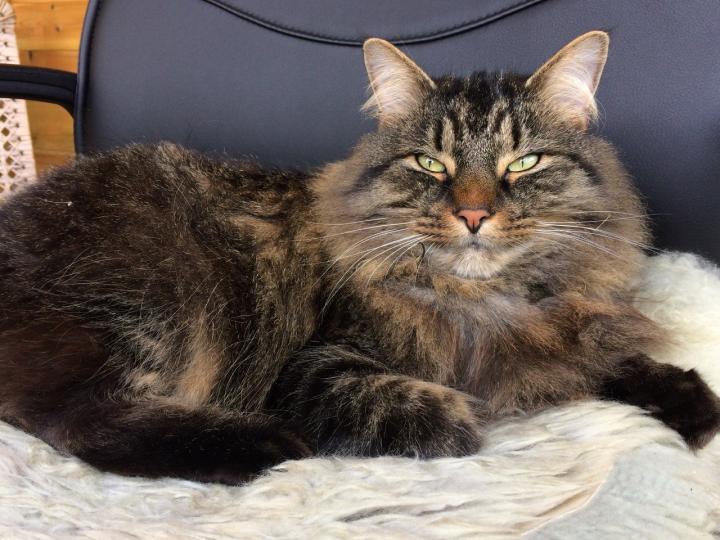A new study shows, for the first time, that it is possible to build contact with a cat by using an eye narrowing technique with them.
This eye narrowing action by humans known as a cat smile – or “slow blink” – and seems to make the human more attractive to the cat.
Will you offer us a hand? Every gift, regardless of size, fuels our future.
Your critical contribution enables us to maintain our independence from shareholders or wealthy owners, allowing us to keep up reporting without bias. It means we can continue to make Jewish Business News available to everyone.
You can support us for as little as $1 via PayPal at office@jewishbusinessnews.com.
Thank you.
Eye narrowing in cats looks like the “Duchenne smile”, a genuine smile in humans – see picture. Eye narrowing is a positive situation in some other species as well.
The team, led by Dr. Tasmin Humphrey and Professor Karen McComb, animal behavior scientists at the University of Sussex, has made two experiments. The experiments took place in each cat’s home.
The first included a total of 21 cats from 14 different households. Ten were male and 11 were female, with cat age ranging from an estimated 0.45-16 years. The psychologist advised the cat’s owner on how to slow blink. Once the cat had settled down in one place, the psychologist asked the owner to sit approximately 1 meter away from the cat.
revealed that cats are more likely to a cat-eye narrowing at their owners after their owners have slow blinked at them, compared to when they act natural and don’t interact at all.
In the second experiment, included 24 additional cats. Twelve were male and 12 were female that interact with researchers from the team.
In this experiment, the researcher, who was unfamiliar to the cat, either slow blinked at the cat or adopted a neutral face without direct eye contact. This experiment also tested which context the cats preferred to approach the unfamiliar experimenter, by them offering the cat a flat hand with the palm faced upwards whilst sat or crouched directly opposite the cat.
The study ‘The role of cat-eye narrowing movements in cat-human communication’, published online in the Nature journal Scientific Reports.
A Duchenne smile engages the muscles around the mouth and eyes
A Duchenne smile engages the muscles around the mouth and eyes
Dr. Leanne Proops at the University of Portsmouth who co-supervised the work said: “It’s definitely not easy to study natural cat behavior so these results provide a rare insight into the world of cat-human communication.”
“In terms of why cats behave in this way, it could be argued that cats developed slow blink behaviors because humans perceived slow blinking as positive,” said Dr. Tasmin Humphrey, a Ph.D. student at the University of Sussex, who was the first author of the study. “Cats may have learned that humans reward them for responding to slow blinking. It is also possible that slow blinking in cats began as a way to interrupt an unbroken stare, which is potentially threatening in social interaction.”
Professor Karen McComb, who supervised the work, said: “As someone who has both studied animal behavior and is a cat owner, it’s great to be able to show that cats and humans can communicate in this way. It’s something that many cat owners had already suspected, so it’s exciting to have found evidence for it.
“This study is the first to experimentally investigate the role of slow blinking in cat-human communication. And it is something you can try yourself with your own cat at home, or with cats you meet in the street. It’s a great way of enhancing the bond you have with cats. Try narrowing your eyes at them as you would in a relaxed smile, followed by closing your eyes for a couple of seconds. You’ll find they respond in the same way themselves and you can start a sort of conversation.”
Cat psychology – the existing context
The psychology of cats hasn’t been studied as extensively as dogs, but what is already known includes:
· That cats have been shown to attract and manipulate human attention effectively through ‘solicitation purring’.
· That cats can discriminate their name from other words, even when unfamiliar humans are calling.
· That cats may be sensitive to human emotional cues and will rub or butt their head against an owner who feels sad.




